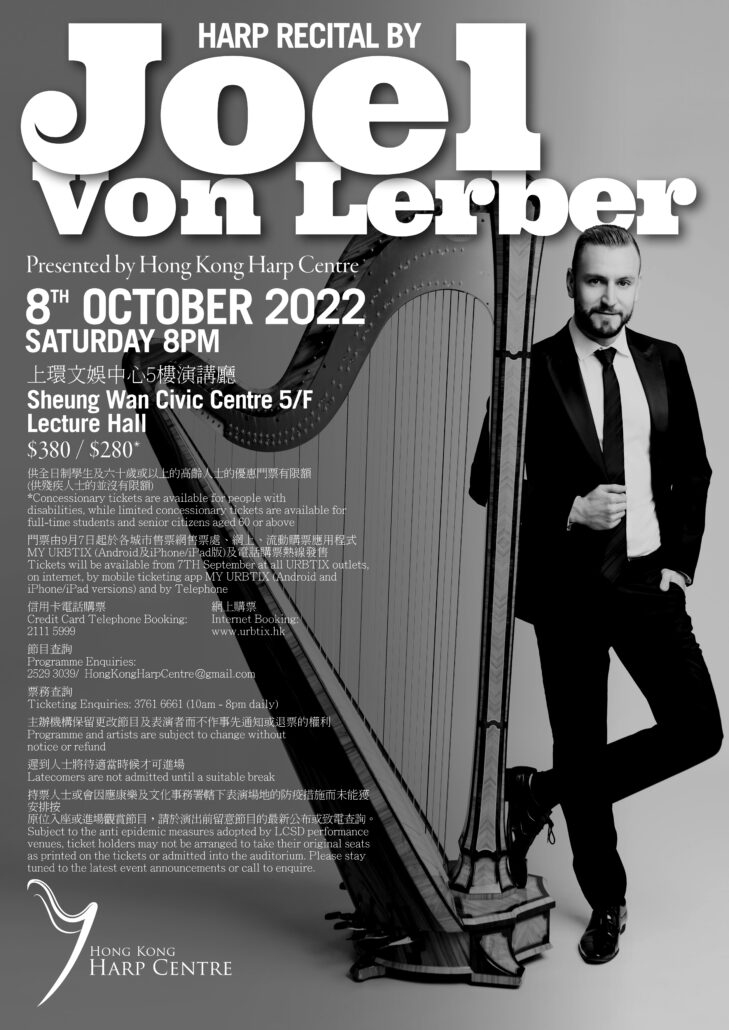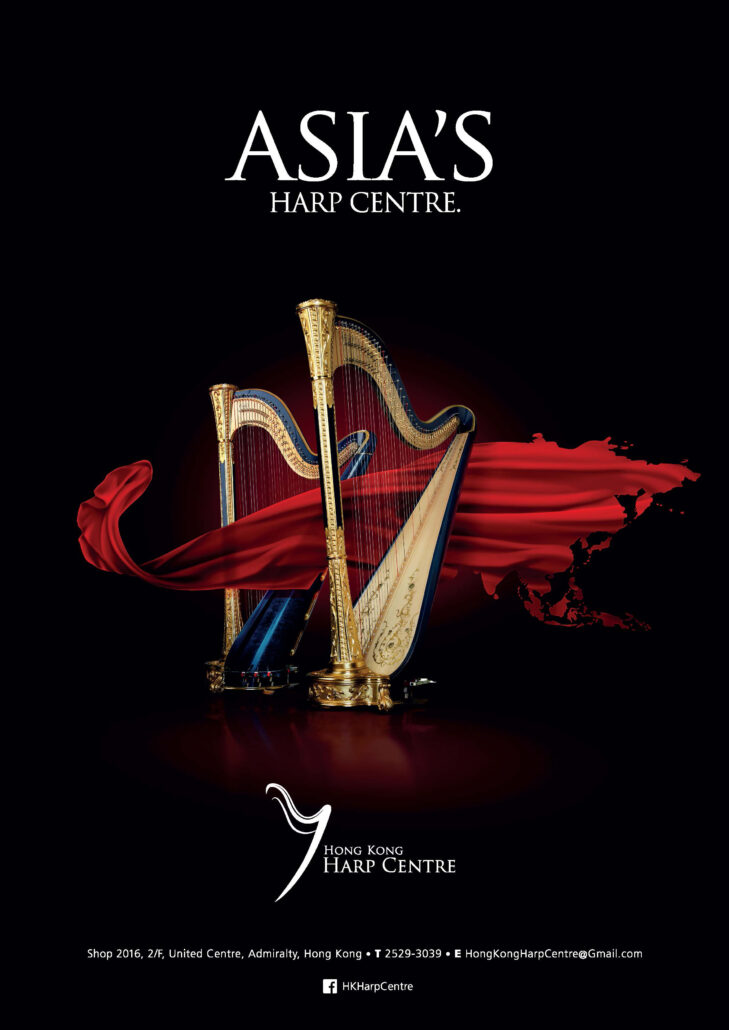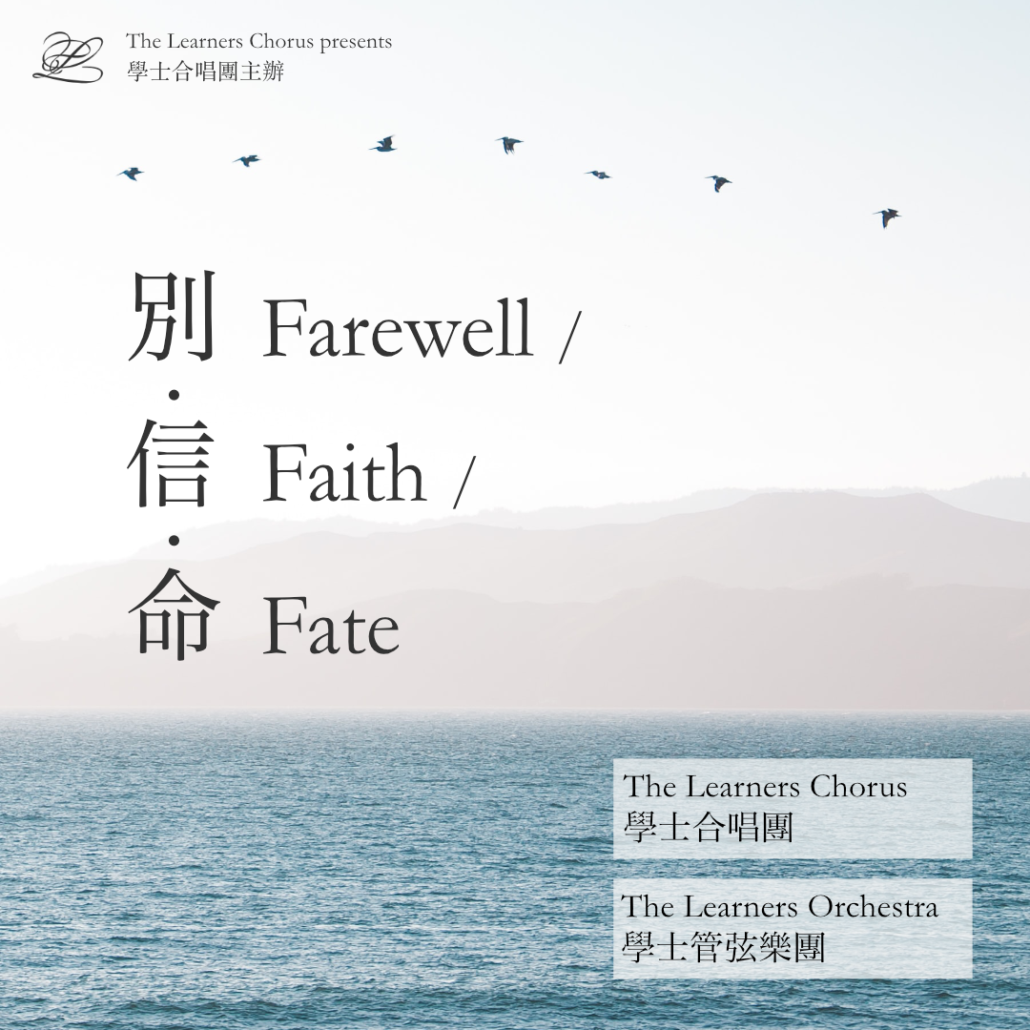
Programme
Jason Liu
Credo
Jason Liu, conductor
Ludwig van Beethoven
Symphony No.5 in C minor, Op.67
– INTERMISSION –
Gustav Mahler
arr. Clytus Gottwald
Im abendrot, Adagietto from the 5th Symphony
Francis Poulenc
Stabat Mater
Candice Chung, soprano
Apollo Wong, music director & conductor
The Learners Chorus
The Learners Orchestra
Performers’ Biographies
Apollo Wong, music director & conductor
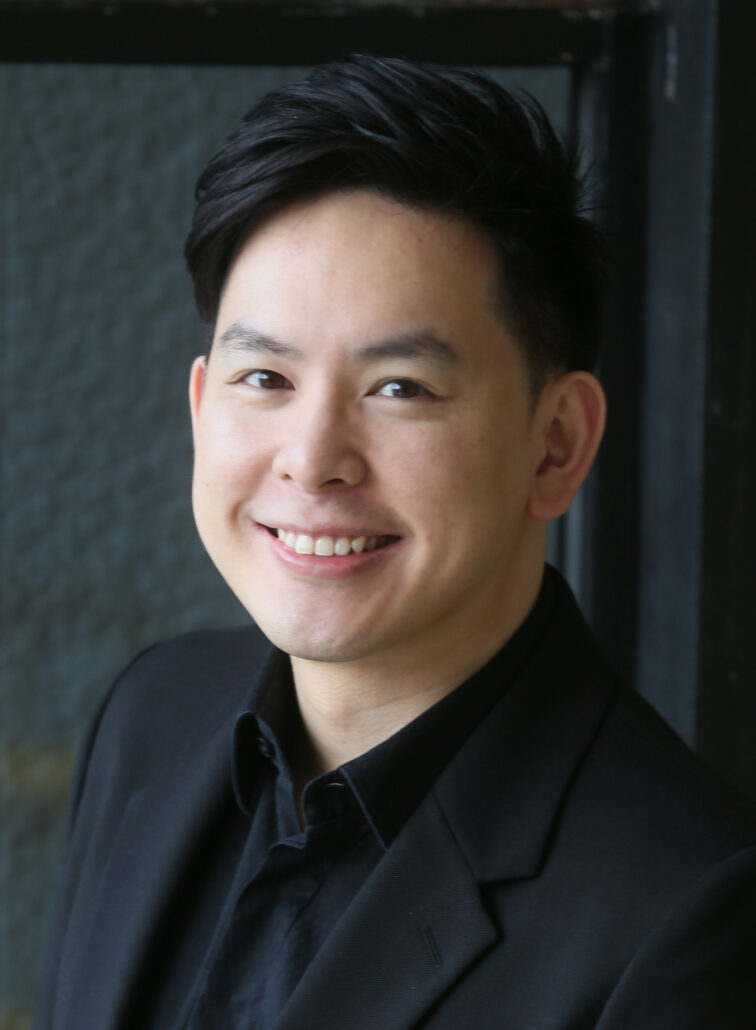
A native of Hong Kong, Apollo Wong is a conductor, operatic bass and educator. Educated in the United States and Germany, he studied voice with Vladimir Chernov, Juliana Gondek and Sami Kustaloglu. He was the winner of Palm Springs Opera Guild Vocal competition and the Pasadena Opera Guild Vocal Scholarship. In 2019, Wong has won first place at the Hong Kong Choral Conducting Competition and the Asia Pacific Youth Choir Award.
Wong has sung major operatic and musical roles including Figaro (Le Nozze di Figaro), Don Alfonso (Così fan tutte), Sarastro (Die Zauberflöte), Bottom (A Midsummer Night’s Dream), Frère Laurent (Roméo et Juliette), Colline (La Bohème), Simone (Gianni Schicchi), Geppetto (Pinocchio) and Javert (Les Misérables), among others. Amongst his concert and oratorio repertoire, he has notably both sung the bass solos and conducted Brahms’ Ein Deutsches Requiem, Faurè’s Requiem, Handel’s Messiah, Mahler’s Symphony No. 8 “Symphony of a Thousand”, Mozart’s Requiem, and Verdi’s Messa da Requiem. He also performed in world premiere operas by Chan Hing Yan: Lu Xun (Heart of Coral), Moonlight (Ghost Love) and Kang You Wei (Datong); and Caterpillar and Duchess (Alice in Wonderland) by Valtinoni. He recently sung Schubert’s Winterreise (with Hong Kong City Contemporary Dance Company).
Being an active conductor, Wong is currently Chorus Master of Hong Kong Philharmonic Chorus, Music Director of The Learners Chorus and The Learners Orchestra, and conductor of Hong Kong Children’s Choir and St. Paul’s Co-educational College senior choirs. Being recognized as an inspiring chorus and orchestral builder, from community to professional ensembles, he has introduced a broad variety of choral and orchestral music to the public: from Magnificat by Bach and Rutter, Brahms’ Ein Deutsches Requiem and Schicksalslied, Gounod’s St. Cecilia Mass, Lauridsen’s Lux Aeterna, Lully’s Te Deum, Mendelssohn’s Lobgesang, Mozart’s Great Mass in C Minor and Requiem, Rossini’s Messa di Gloria and Stabat Mater, Tallis’ Spem in Alium, Verdi’s Messa da Requiem and Quattro pezzi sacri; to Mahler’s Symphony No. 2 “Resurrection”, Martin’s Mass for Double Choir, Orff’s Carmina Burana, Pärt’s Credo, Poulenc’s Gloria, Prauliņš Missa Rigensis, Prokofiev’s Alexander Nevsky, Rachmaninoff’s The Bells, and Stravinsky’s Symphony of Psalms.
He has been the chorus master for conductors such as David Atherton, Lorin Maazel, Helmuth Rilling, Tan Dun and Jaap van Zweden; and has been assistant conductor in operas Aida, Don Giovanni, Gianni Schicchi, L’elisir d’more, La Bohème and Turandot.
Samuel Huang, concertmaster
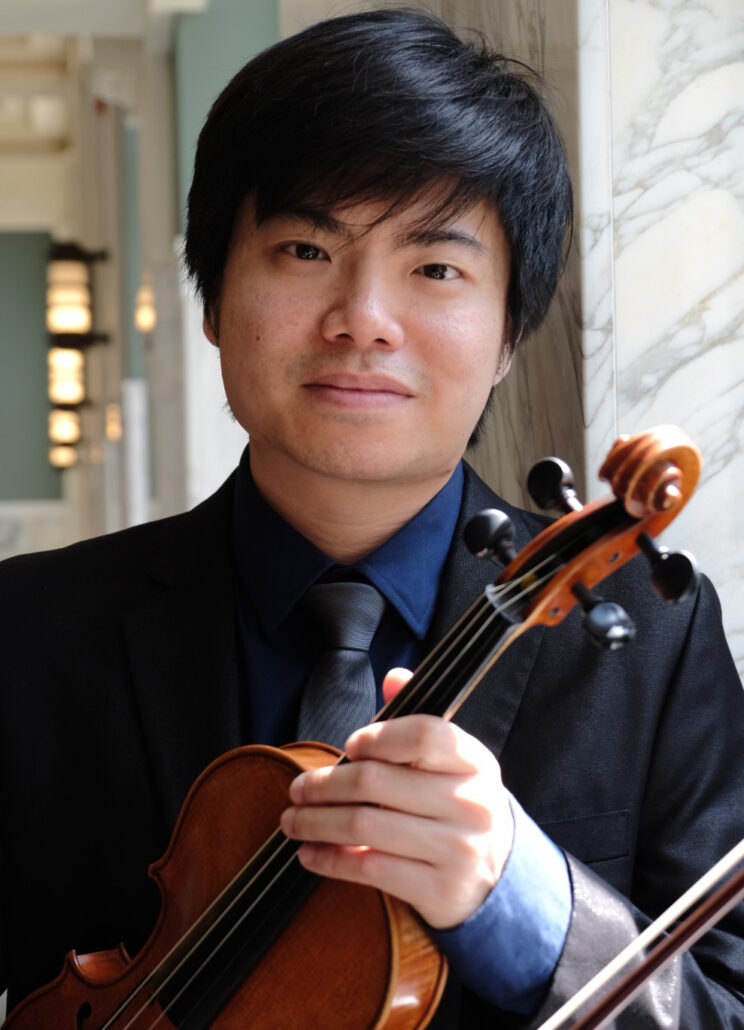
Samuel Huang was born and raised in Hong Kong, where he studied with Ray Tsoi at Hong Kong Baptist University, and with Ivan Chan at Hong Kong Academy for Performing Arts. He continued his studies in the United States under the tutelage of Benny Kim, Miami String Quartet, Cathy Meng Robinson, and Amy Lee at University of Missouri-Kansas City and Kent State University.
Winner of the Hong Kong Baptist University Concerto competition and UMKC Concerto/Aria competition, Samuel has appeared as a soloist and concertmaster with orchestras including Collegium Musicum Hong Kong, Pro Arte Orchestra of Hong Kong, Shenzhen Arts School Orchestra, the Kharkov Philharmonic Orchestra (Ukraine), Heartland Chamber Orchestra, Texas Festival Orchestra, and Miami Festival Opera Orchestra.
Samuel had served as the violinist of the NewEar Contemporary Chamber Ensemble in Kansas City for four years. As a chamber musician, he has collaborated with artists such as Ida Kavafian, Yekwon Sunwoo, and members from Miami String Quartet and St. Petersburg String Quartet. Apart from being a performing artist, Samuel has also given masterclasses as a visiting educator in various universities and festivals, including Western Illinois University, Fort Hays State University, and International Fringe Music Festival.
Jason Liu, conductor
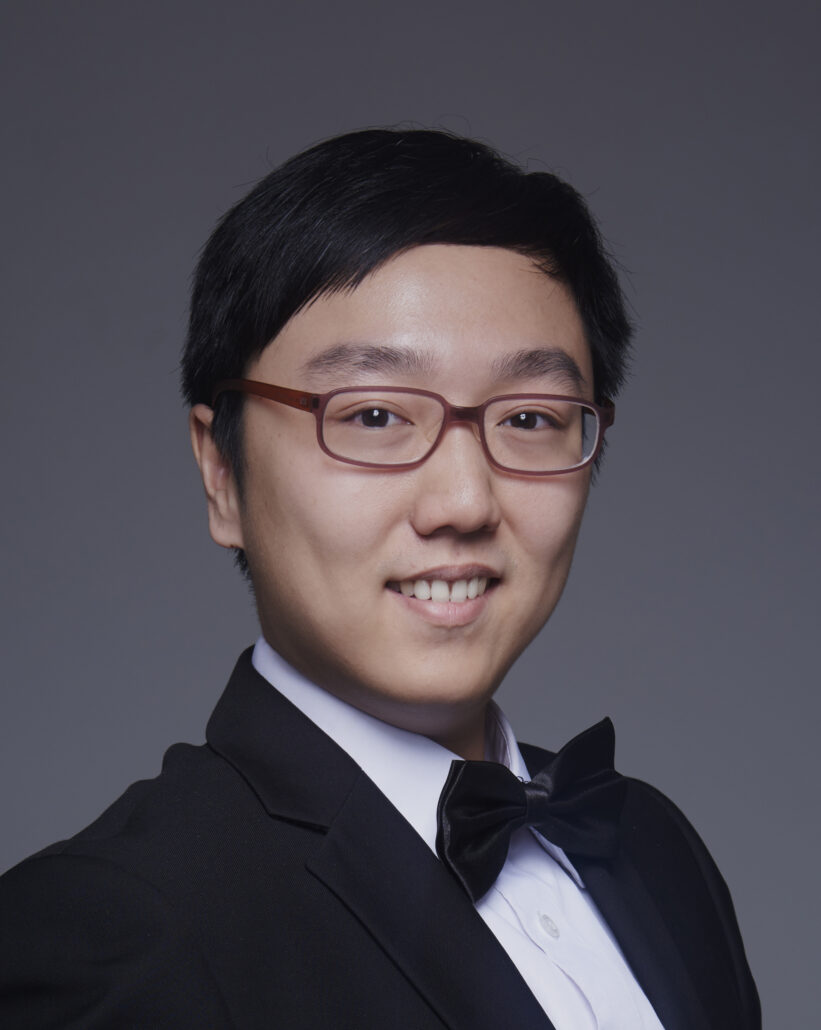
Born in Hong Kong, Jason Tsz-Shing Liu studied the piano, the cello and composition since a young age. He attained the FTCL Diploma for piano in 2009 and the LTCL Diploma for cello in 2011. A current Master student at the Hong Kong Academy for Performing Arts, Liu is majoring in Collaborative Piano under the tutelage of Associate Professor Mr Hsu Wei-En. He actively performs with vocalists and instrumentalists inside and outside the Academy, and recently served as rehearsal pianist for Academy Opera Cavalleria Rusticana and Pagliacci.
An active solo and collaborative musician, Liu appears as conductor, singer, pianist and cellist in various choruses and orchestras. Liu is currently Assistant Conductor of The Learners Chorus under the guidance and tutelage of Mr Apollo Wong. He was Chorus Master for Ponte Singer’s production of Brahms’ Ein deutsches Requiem. He was also the Choirmaster of the Hong Kong University Students’ Union Choir, and led the Choir’s performance of Orff’s Carmina Burana. Liu is the principal cellist of the Millennium Youth Orchestra and cellist of Js’ Trio, and collaborated with pop musicians Peter Kam and Chet Lam.
Liu majored in Composition and Electronic Music in the Junior Music Programme of the HKAPA under the tutelage of Ms Poly Ng. His compositions were awarded in numerous competitions and were performed by notable groups in places including Australia, Austria, Germany, Singapore, South Africa, United Kingdom, USA and Hong Kong. Recent pieces include The Iron House for baritone and piano, one of the three finalist pieces of Oper Leipzig’s composition competition “Wahrheiten”, chamber piece The Vanishing Glimpse commissioned by Musicus Society and The Diaspora for The Learners Chorus. He is a member of Composers and Authors Society of Hong Kong.
An alumnus of the Hong Kong Children’s Choir, Liu toured extensively as a singer and was the pianist for the Choir’s 2011 European Tour. He is currently a tutor of HKCC.
Liu has completed his Master in Architecture and Bachelor of Arts (Architectural Studies) at the University of Hong Kong. He was the recipient of multiple prizes and scholarships during his study. He underwent his exchange semester in the Academy of Fine Arts Vienna in 2020 Spring, and was a chorister of Wiener Singverein during his stay.
Candice Chung, soprano
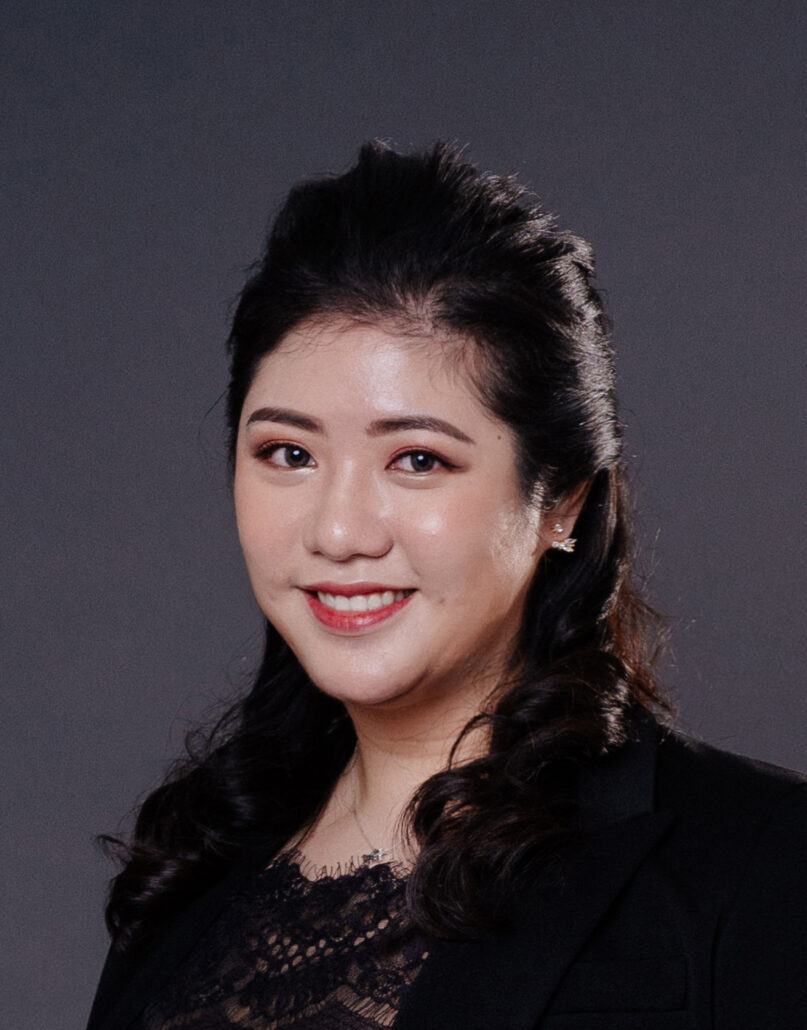
Hong Kong born soprano Candice Chung earned her Bachelor of Music degree at Manhattan School of Music where she studied with Metropolitan Opera’s Mark Oswald and renowned American soprano Ashley Putnam. At Eastman School of Music where she attained her Master of Music degree, she studied with American mezzo-soprano Katherine Ciesinski.
In 2014, Candice was a national finalist at the Classical Singer Vocal Competition and was awarded first place in the National Association of Teachers of Singing Regional Competition. She also won 3rd place in the 34th Annual Jessie Kneisel Lieder Competition, and received the Encouragement Award at the Metropolitan Opera National Council District Auditions in 2015.
Candice’s stage appearances in the United States include the role of Dew Fairy in Hansel and Gretel, and Rosalinda in Die Fledermaus in Connecticut. With Eastman Opera Theatre she sang the role of Laetitia in The Old Maid and the Thief, and covered the role of Emily in Ned Rorem’s Our Town. She made her Italian stage debut as the Countess from Le Nozze di Figaro in summer 2017. With Opera Hong Kong, her more recent roles include Norina in Don Pasquale, Micaela in Carmen and Fiordiligi in Cosi fan tutte. Candice frequently performs with Bel Canto Singers in Hong Kong, with which she sang the original role of the Swallow in the musical The Happy Prince & The Other Wise Man in December 2018 and its re-run in March 2019. Her most recent role with Bel Canto Singers is Liu in the original pop opera My Beloved in December 2021.
As a concert soloist, Candice sang Dvorak’s Te Deum and Beethoven’s Mass in C with the Eastman School of Music, Bach’s Magnificat in D with the Hong Kong Young People’s Chorus, Carl Orff’s Carmina Burana with the Hong Kong Ponte Singers and Orchestra. Candice was also a frequent soloist for the Eastman Cantata Series during her studies at Eastman.
Candice made her recital debut in Hong Kong under the presentation of the Leisure and Cultural Services Department’s “Our Music Talents” Series in May 2017.
The Learners Chorus
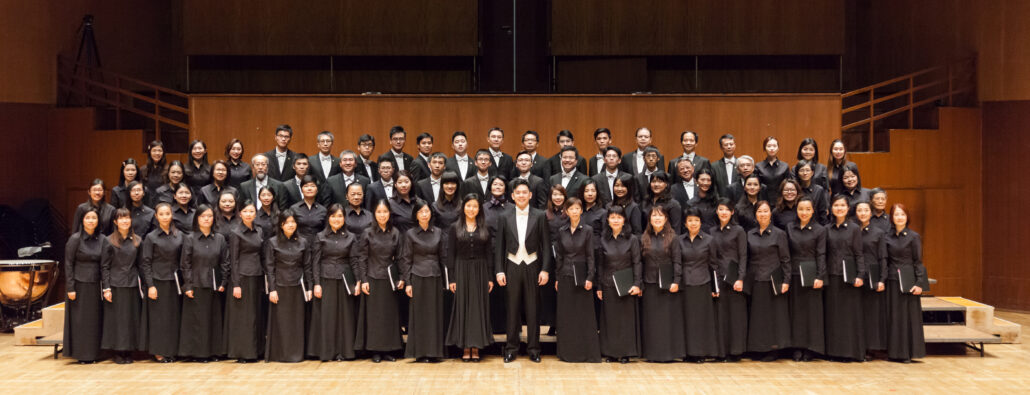
Music Director & Conductor: Apollo Wong
Assistant Conductor: Jason Liu
Pianist: Alexander Wong
The Learners Chorus was founded in 1979 by former members of the Hong Kong University Students’ Union Choir. Its repertoire includes a wide spectrum of choral works, and commissioned works by distinguished Hong Kong composers, including Dr. Chan Hing Yan, Dr. Victor Chan, Dr. Daniel Law, Mr. Law Wing Fai, Dr. Phoebus Lee, Mr. Jason Liu, Mr. Michael Mak and Dr. Richard Tsang. Major choral works presented and performed in recent years include Bach’s Magnificat, Bernstein’s Chichester Psalms, Brahms’ Ein Deutsches Requiem and Schicksalslied, Faure’s Requiem, Gounod’s St. Cecilia Mass, Lully’s Te Deum, Mahler’s Symphony No. 2 “Resurrection” and Symphony No. 8 “Symphony of a Thousand”, Martin’s Mass for Double Choir, Mendelssohn’s Lobgesang, Mozart’s Great Mass in C Minor and Requiem, Orff’s Carmina Burana, Pärt’s Credo, Poulenc’s Gloria, Prauliņš’ Missa Rigensis, Rachmaninoff’s The Bells, Rossini’s Messa di Gloria, Petite Messe Solennelle and Stabat Mater, Rutter’s Mass of the Children, Stravinsky’s Symphony of Psalms, Tallis’ Spem in Alium and Verdi’s Messa da Requiem and Quattro pezzi sacri.
Apart from hosting large-scale concerts with its official orchestral partner, The Learners Orchestra, the Chorus has also given guest performances both locally and abroad. In 2013 and 2014, the Chorus performed Britten’s War Requiem with the Hong Kong Philharmonic Orchestra and its Chorus under the baton of the late Maestro Lorin Maazel, and to celebrate “Hong Kong Cultural Centre – Celebrating 25 Years” respectively. In 2015, Learners performed at “Macao Soul” with the Macao Orchestra and the Macao Perosi Choir at the 26th Macao Arts Festival. In July 2016, in collaboration with the Hong Kong Economic and Trade Office, London, Learners gave its London debut at St John’s Smith Square, performing a wide range of choral works in nine different languages, of different styles and from across different eras. In August 2016, alongside the Arnold Schoenberg Choir, the Vienna Boys’ Choir and the Hong Kong Treble Choir, Learners performed Mahler’s Symphony No. 8 “Symphony of a Thousand” at the Hong Kong-Vienna Music Festival. In May 2017, Learners performed at “紫荊花開”, a joint choral concert with the Shenzhen University Caisangzi Chorus (深圳大學采桑子合唱團), at the Shenzhen x Hong Kong Art & Culture Exchange Festival (深港青年文化交流藝術季). In 2018, Learners gave three visits to Macau to participate in the recording session of Te Deum by Macanese composer Fr. Áureo in May, and perform at “Heroes: A Video Game Symphony” and “National Geographic: Symphony for Our World” with the Macao Orchestra under the baton of Maestra Jessica Gethin, in June and November respectively. In April 2019, alongside the Shenzhen Symphony Orchestra, Learners performed at “Arias between Western & Eastern”, the closing concert of the 2019 Shenzhen Belt & Road International Music Festival. In August 2019, in collaboration with the Dream Orchestra of Los Angeles, Learners gave its North American debut, performing both at the Los Angeles International Choir Festival and, alongside the Opera Chorus of Los Angeles, “Verdi Requiem” at the Cathedral of Our Lady of the Angels.
Learners is devoted to promoting music among young people. Students are often invited to sing with the Chorus or play in The Learners Orchestra alongside professional musicians. Young choir members interested in choral conducting have been offered the chance to conduct the Chorus in various concerts. Young musicians also give guest performances in its concerts. “Learners Learning” Concerts have been held to improve choir members’ vocal skills through ensemble or solo singing. During school breaks, Learners’ student members are often sponsored by friends of Learners to participate in vocal workshops and master classes given by its Music Director. Student Ticket Sponsorship Programme has served its mission of extending music appreciation opportunities among Hong Kong’s youth. Since 2006, almost 7,000 students, many first-timers, have received tickets to its concerts, all sponsored by benevolent friends of Learners.
Active in community and charitable work, Learners has also given performances at elderly homes, disabled homes and sheltered workshops. Learners has also presented outreach programmes at community centres in London, featuring both choral singing and interactive games with the audience, both of which were positively received. Net ticket proceeds from fundraising concerts have been donated to charitable projects of the Hong Kong Christian Council, including the “Rebuilding Village Clinics Project”, “Water Cellars for Homes Project”, “Rebuilding Collapsing Schools Project”, “Senior High School Sponsorship Project”, “School Library Books Project” in China, “School Building Project in Myanmar”, “Village Development in Myanmar Project”, “Feeding Program in Myanmar / Cambodia” and “COVID-19 Relief Projects”. Learners has also raised funds for A Drop of Life Limited to install water cellars in Gansu, and participated in their “Walk for Water” project. The Chorus has also co-presented earthquake relief concerts in the past, including, most recently, “The Future of Nepal: Fundraising Concert for 4.25 Earthquake Victims” in May 2015. In June 2015, Learners performed at “Michaelmas Fair 2015 Concert – Hope and Dream”, a fundraising concert organized by St John’s Cathedral of Hong Kong.
By cultivating youth education through the aforesaid means, Learners strives to abide by its name in a fuller sense.
The Learners Orchestra

In April 2006, a group of caring orchestral players performed in “A Tribute to Mozart – Requiem and other works”, a charity concert presented by The Learners Chorus (the “Chorus”) to commemorate the 250th birthday of Mozart. In September 2007, the Friends of Learners Orchestra (the “FLO”) was officially founded and made its debut at the Chorus’ annual concert at the Hong Kong Cultural Centre, featuring Prokofiev’s Alexander Nevsky cantata. Since then, FLO has performed with the Chorus in its large-scale concerts, namely, “Magnificat through the Ages”, “Celebrating Thirty Years of Harmony: Gustav Mahler Symphony No. 8 Symphony of a Thousand”, “Rossini Messa di Gloria & Brahms Schicksalslied”, and “Giuseppe Verdi: Messa da Requiem”. At its performance in “Celebrating Great Masters for the Voice” in September 2013, FLO was renamed The Learners Orchestra (“TLO”), making it the official orchestral partner of the Chorus. As part of the Chorus’ 35th Anniversary Concert Series, TLO held its inaugural concert with the Chorus in May 2014, performing “Mahler Symphony No. 2 Resurrection”, followed by “Brahms Ein Deutsches Requiem” in August 2014. Subsequent to that, TLO performed in the 2015 SliderAsia Music Festival’s “SliderAsia Open Winners Feature & Learners Orchestra Concert”, “La Musica Sacra Italiana” in July 2015, “Songs of Praise – in Voces Multi” in January 2016, featuring Lully’s Te Deum, “Mozart Great Mass in C minor” in September 2016, and “Lux Aeterna” in January 2017.
2017 also saw the 10th anniversary of the Learners Orchestra. “10 May x 10 Years: A French Celebration” concert was held in May 2017, featuring Saint-Saëns’ Symphony No. 3 in C minor “Organ”. This was followed by “Lights of Belief and Praise” in September 2017, “A Bicentennial Celebration: Gounod St Cecilia Mass” in September 2018, “UC Conductors Through the Ages” in January 2019, featuring Fauré’s Requiem, “Tchaikovsky Symphony No. 4” in June 2019, and “Carmina Burana” in November 2019.
Members of TLO are recruited from various local schools and universities, as well as from community and professional orchestras. All members strongly dedicate themselves to supporting charitable performances of the Chorus without receiving any honorarium. Their selfless and benevolent effort, and consistently high performance standards have been much appreciated by the Chorus, the audience, and all beneficiaries. TLO also aims to play a vital role in promoting music education – specifically, by providing opportunities for music students to work alongside their teachers, amateurs alongside professional musicians; and in expanding their concert repertoire beyond standard orchestral music.
Programme Notes
Jason Liu: Credo
Credo was commissioned in 2020 by St. Paul’s Co-educational College for the seventieth anniversary of the Senior Mixed Voice Choir. The lyrics, sung in Cantonese, reiterates the faith on the emotional power of choral voices through imageries of echoes and nature, and the fiery passion towards life and time. Part of the text was inspired and loosely translated from Credo, attributed to American poet Jack London.
The piece received its premiere in July 2022 in the College’s Summer Concert, after a 2-year hiatus of live performance by the choir.
Beethoven: Symphony No.5 in C minor, Op.67
I. Allegro con brio
II. Andante con moto
III. Scherzo: Allegro
IV. Allegro
One of the most identifiable piece of classical music, Beethoven’s Symphony No. 5 has been given connotations of fate, of the eternal struggle, and of the ultimate triumph. The narrative of per aspera ad astra is dramatically implied and exemplified by the emerging romanticism, the “fate” motif, and the overarching tonal scheme travelling from the dreadful C minor to the triumphant C major.
The symphony was completed in Vienna in 1808, when Beethoven was facing his gradually increasing hearing loss, and disturbed by the Napoleonic Wars. The symphony was premiered on 22 December 1808 at a concert at the Theater an der Wien; in the same concert Beethoven presented the Symphony No. 6, a concert aria, excerpts from the C major Mass, Piano Concerto No. 4, and the Choral Fantasy.
The first movement (Allegro con brio), in the typical sonata-allegro form, opens with the famous 4-note short-short-short-long “fate” motif, which would appear in different guises in the subsequent movements. Only after the fortissimo initial statement played by all strings and clarinets, the C minor tonality is grounded by the cellos and bassoons, with the repetition of the rhythmic motif wanders in different string parts. The tightly knitted repetitions gradually grow into a urging flow of quavers, leading to a diminished seventh chord. It opens up to the relative major in E flat by the horn, with a transitional phrase extended from the fate motif. The second theme, in contrast, is in a more lyrical character initiated by the violins, with the fate motif now forming the accompaniment by the cellos and basses. After another buildup of intensity, the end of the exposition reaffirms the tonality in major, with the orchestra playing the fate motif rhythm in tutti.
The motif would continue to travel through different timbres and tonalities in the development section, leading to an extended variation of the transitional horn theme, this time in minor and played by the violins. The elaboration leads to a seemingly dead end, with the winds and strings playing chords alternately in diminuendo. The fate motif then suddenly breaks in violently, which continues through and brings us back to the recapitulation. After a brief restatement of the first theme, the horn theme reappears — this time in the parallel major of C. The sunny C major would not last till the end of the movement, as the extensive coda would eventually brings us back to the original key of C minor.
The second movement (Andante con moto) is in A-flat major — the submediant of the home key, or the “counter-relative” major of C minor. This lyrical and melodious movement creates a stark contrast with the first movement, which was built up entirely on the counterpoint of short motivic ideas. Loosely in the form of theme and variations, the theme begins with the first subject played by the violas and the cellos in slow triple time, followed by the second subject by the clarinet and the bassoon, which surprisingly opens to a fortissimo reaffirmation of the subject, this time played by the trumpets, horns and oboes and modulated to C major.
In the subsequent variations (which are considerably free in the structure), the first subject would appear in flowing semiquavers, then later in demisemiquavers, and finally in a grand canon between the violins and the woodwinds. A brief coda recalling fragments from the two subjects would conclude the movement.
In the 4-movement late Classical symphonies written by the predecessors like Mozart of Haydn, a minuet and trio was more typically incorporated. Here in the third movement Beethoven employed scherzo and trio, which is similarly in triple time but relatively quicker in tempo and more lighthearted.
The scherzo begins with a rising motif in the cellos and basses and answered by the violins and violas. The motif is repeated, followed by a fanfare-like four-note motif – again a variation of the fate motif – initially in the horns then spreads to the tutti orchestra. After a brief reappearance of the initial motif in B-flat minor, a short development reusing the fate motif travels back to C minor. Towards the end of the scherzo, quick quavers emerge in the violins, hinting the character of the trio.
The fugato trio begins with the subject of ascending quavers in the lower strings, then gradually stacking up in the upper register of the orchestra. The second part begins with a “hesitation” at the subject entrance by the cellos and basses. Towards the end of the repetition of this part, it shifted away to a pianissimo passage by the woodwinds, falling from the highest register in the flute to the bassoon three octaves below. The pizzicato in the lower strings would lead back to the scherzo.
The scherzo is again not an exact repetition of its initial statement. Characterised by pizzicato played pianissimo, the passage ended with an interrupted cadence landing on the long, unsettled A-flat in the lower strings. The timpani faintly begins at the same time with the rhythm of the fate motif, which together gradually grows in intensity with the violins climbing to the dominant seventh and winds stacking up, immediately leading to the final movement.
The jubilant C major takes over the gloomy C minor in this triumphant final movement in the form of a march. Also in this movement, it was around the first time in the symphonic literature when piccolo, contrabassoons and trombones were introduced as part of the orchestra and expanded its sonority. With its structure based in sonata form, the recapitulation and the coda are substantially extended in proportion, as it is the case in some other Beethoven’s works.
The first theme played by the tutti orchestra establishes a clear tonic at first, then a series of aspiring major scales and military dotted rhythm. After a brief transition the music arrives at the second theme characterised by the triplets – again distantly varied from the fate motif rhythm. Towards the end of the exposition, clarinets, bassoons, violas and cellos introduce a new short theme which is quickly repeated loudly by the tutti orchestra.
The development section expands on the triplet rhythm at the second theme, which ends loudly on a pedal point at the dominant note of G. Surprisingly it recalled scherzo theme in quiet pizzicato, and subsequently a condensed buildup leading back to the recapitulation in the victorious C major. After the recapitulation of the first and second themes, the previous “short” theme is followed by further elaboration on the triplet rhythm. The coda opens with a related theme by the bassoons and echoed by the horns, which leads to the final Presto, which utilises the urgency brought by the “short” theme rhythm. The symphony ends with a prolonged series of C major chords, ultimately concluding and converging all the tensions throughout the piece.
Mahler, arr. Gottwald: Im abendrot
Im abendrot is a choral transcription of the famous Adagietto 4th movement of Mahler’s Symphony No. 5. When Mahler was writing the symphony in 1901, he had recently met Alma Schindler, whom he would marry the next year. This movement was said to be a love song to his newlywed wife. Despite all the highly complex contrapuntal writings in the other movements of the symphony, this movement is scored for the strings and harp only. The warmth of the timbre and the cantabile melody have rendered the piece one of the most famous and popular segments of Mahler’s compositions.
In decades following WWII this movement was given an elegiac connotation, particularly due to the use of this movement by Leonard Bernstein as tribute to Serge Koussevitzky, and later to R. F. Kennedy, and in recent decades events commemorating the September 11 attacks in the United States. Clytus Gottwald’s incorporation of the text, Im Abendrot (at sunset) by German poet Joseph von Eichendorff, further augmented the connotations of love and death – as Gottwald had quoted a mentor of his, the famous German musicologist Theodor Adorno, “for that which seeks longingly to transcend itself is, at the same time, farewell, memory.” A well-known setting of the text was by Richard Strauss, as one of his “Four Last Songs”.
A German choir director, composer and musicologist, Gottwald founded the Schola Cantorum Stuttgart in 1960, a vocal ensemble of 16 to 18 professional singers. The repertoire of the ensemble included contemporary works written for them by forefront composers such as Pierre Boulez, György Ligeti and Krzysztof Penderecki, before the ensemble’s disbandment in 1990. In a workshop with Pierre Boulez in 1978, Gottwald had the idea of transcribing Ravel’s Soupir using techniques in the writing of Ligeti’s Lux aeterna, which in turn had been commissioned and premiered by the Stuttgart ensemble. Since then, Gottwald has made over 100 choral transcriptions on instrumental or vocal works by various composers, including this setting of Im Abendrot in 2008.
One notable feature of this arrangement, as it is the case with most of Gottwald’s arrangements, is that it is scored for 16 voice parts, demanding a delicate manipulation of timbre and density of the choral soundscape.
Poulenc: Stabat mater
I. Stabat mater dolorosa
II. Cujus animam gementem
III. O quam tristis
IV. Quae moerebat
V. Quis est homo
VI. Vidit suum
VII. Eja mater
VIII. Fac ut ardeat
IX. Sancta mater
X. Fac ut portem
XI. Inflammatus et accensus
XII. Quando corpus
French composer and pianist Francis Poulenc was well-known with his light-hearted piano pieces, chansons, chamber and orchestral pieces. From 1930s onwards, he began writing more of sacred choral music which gradually revealed his other side of seriousness and religiosity, with the more famous works being Gloria (1959) – which Learners had performed in 2017, the unaccompanied Mass in G major (1937) and Stabat Mater (1950). The first of his choral-orchestral work, Poulenc held high regard to his setting of Stabat Mater: “Here I have brought something new and I expect that in the end people will be interested more in the Stabat Mater than in all my piano works.”
Stabat Mater was written in response to the sudden death of Poulenc’s friend, Christian Bérard, who was a prominent theatrical and fashion designer, and had worked for the leading organisations and designers including Ballet Russes, Coco Chanel and Christian Dior. After a pilgrimage to the sanctuary of Black Virgin Mary in Rocamadour, Southwestern France, Poulenc began working on the setting, and finished in two months in 1950. Instead of writing a Requiem mass, Poulenc felt the text of Stabat Mater more emotional and fitting to dedicate the work to the memory of his friend. The setting, written for soprano solo, mixed chorus and orchestra, was premiered in 1951 at the Strasbourg Festival under the baton of Fritz Münch.
The Stabat Mater sequence is a medieval Christian hymn to Mary. The text, in Latin, describes Mary’s suffering during Jesus Christ’s crucifixion. Poulenc’s setting divided the text into 12 movements, each of them running a few minutes only. (Coincidentally, the text were divided exactly in the same manner as Pergolesi’s setting of Stabat Mater.) The setting displayed a great variety of dramatic characters throughout the different movements, either conjunct or disjunct with the text, and the coherence was brought by Poulenc’s unique manipulation of colourful harmonies.
The setting begins with Stabat mater dolorosa (The grieving Mother stood), which opens with a slow and sorrowful motif on the violins and violas, characterised by the repeated interval of minor 3rd. The chorus begins with low basses, then the rest of the chorus would join in to heighten up the tragic tension describing the weeping Mary standing besides Jesus, who was being crucified. The following movement, Cuius animam gementem (Through her weeping soul), overlays a touch of urging intensity to the text. Towards the end of the stormy but short movement, the lyrics “pertransivit gladius” (the sword has passed through) was aptly described with the sustained motif in minor 2nd, with a short brassy attack from the trumpet at the beginning of the phrases. The third movement, O quam tristis (Oh how sad), brings back the melancholy through the use of a cappella chorus.
The music and the text in the fourth movement, Quae moerebat (Who mourned), are curiously detached from each other. The uplifting music in major tonality coupled with legato woodwinds and pizzicato strings create a contrast and an awkward distance with the lyrics describing how Mary was mourning and witnessing the punishments on Jesus. The fiery and furious movement of Quis est homo (Who is the man) begins with a tutti minor chord, supported by the chordal accompanying figure in propelling semiquavers. The agitated choir and orchestra are suddenly interrupted, and it opens to a prestissimo passage depicting how Jesus was subjected to the punishment of flagellation.
Vidit suum (She saw) is first opened with the contemplative soprano solo, then the chorus responds with motif which had appeared earlier in the initial movement. The subsequent Eja mater (O Mother) is a spirited and passionate dance in triple time. A solemn setting of Fac ut ardeat (Grant that my heart may burn) once again employs intermittent passages of a cappella chorus, notably with the absence of baritones and basses. Sancta mater (Holy Mother), the ninth movement which comprises of more verses of lyrics than the rest of the setting, opens with a chant-like melody from the basses, and responded by the declamation by the rest of the chorus. A new section, supported by detached semiquavers in ascending chromatic scale and repeated notes in the orchestra, builds up in dynamics and texture gradually, reaching the climax at “Juxta crucem tecum stare” (to stand by the Cross with you) before it suddenly recedes to a floating très doux (very sweet) melody written for “Virgo virginum praeclara” (Noble virgin of virgins). The movement ends with a brief restatement of the a cappella motif appeared in O quam tristis.
Fac ut portem (Grant that I may bear) employs the tempo of sarabande, with the overdotted rhythm reminiscent of French Baroque style of notes inégales written out explicitly in the orchestral parts. The sarabande rhythm, together with the minor tonality and the reappearance of soprano solo, join very well with the lyrics describing the passion of Christ. The penultimate movement, Inflammatus et accensus (Lest I be destoryed by fire), again returns to the urging tempo while depicting burning in flame on the Judgement Day. The fiery atmosphere abruptly calms down, and is continued by the pleading to Christ towards the palm of victory. The final Quando corpus (When my body) is juxtaposed with tranquil depiction (in a cappella, echoing passages from the previous movements) of decaying body, and the exuberant “Paradisi gloria” (the glory of paradise) employing the full orchestral force. The dramatic contrasts and tensions would bring the piece to an end.
Programme Notes:
Jason Liu
The Learners Chorus
Music Director & Conductor: Apollo Wong
Assistant Conductor: Jason Liu
Pianist: Alexander Wong
The Learners Orchestra
# Concertmaster
* Principal
Acknowledgements
The Learners Chorus would like to express her gratitude to the following individuals and organizations for their valuable support in the production of this concert:
- Ms. Candice Chung
- Mr. Samuel Huang
- Ms. Summer Lam
- Ms. Kelly Li
- Mr. Raymond Ng
- Ms. Edith Pun
- Mr. Benedict Shea
- Mr. Gary Tong
- Mr. Alexander Wong
- Mr. Vicky Wong
- All players of the Learners Orchestra
- City Performing Arts Services Company
- Hong Kong Christian Council
- Hong Kong City Hall
- Hong Kong Harp Centre
- Methodist International Church Hong Kong
- The Force Image
- The Leisure and Cultural Services Department
The Learners Chorus would also like to thank the following individuals for their generous sponsorship of free tickets for students and/or donation to the Hong Kong Christian Council’s “COVID-19 Relief Projects”:
- Mr. Andrew Chan
- Mrs. Cheung Ko Man Lai
- Ms. Yvonne Dunn
- Mr. Leung Kin Wah
- Mr. Poon Chun Kau
